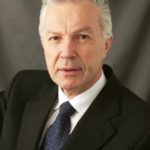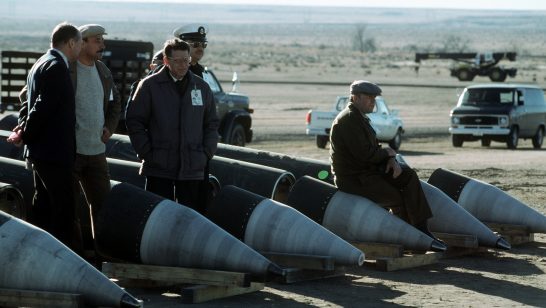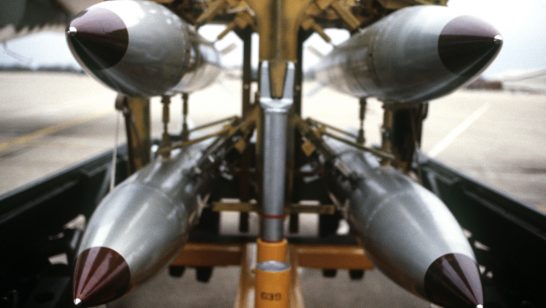
President Obama’s speech in Prague on 5 April 2009, in which he declared his ambition to work for a nuclear weapon-free world, became the starting point of a series of nuclear disarmament initiatives. At a summit meeting of the UN Security Council, the member states re-committed themselves to the objective of a world without nuclear arms; New Start was agreed, lowering the numbers of US and Russian strategic nuclear arms by one third; the first of a series of four top-level conferences on nuclear safety and security convened in Washington; and the US administration adopted a new Nuclear Posture Review (NPR) which extended unconditional negative security assurances to non-nuclear weapon states in good standing under the NPT. Importantly, the NPR also declared that the USA would work to establish the conditions for a transition to policies of No-First-Use.
All of this happened in the course of one year. As a result, Obama was awarded the Nobel Peace Prize for 2010. However, from mid-2010 the disarmament initiatives came to a halt, except for practical measures to enhance the safety and security of nuclear materials and activities. Since then, the nuclear arsenals have been modernized and many of them expanded, leaving us with a gloomy picture as the PREPCOM meets in New York.
New obstacles
It is customary to hold the USA and Russia responsible, more than others, for this sad state of affairs. Ongoing developments in Crimea/Ukraine have become a special burden on relations between them. Barring further annexations and destabilization of Ukraine, however, relations may be back to normal before long. One year after the invasion of Czechoslovakia in 1968, the Strategic Arms Limitation Talks started; in 2001 Russia was suspended from the Council of Europe because of the war in Chechnya, but for months only; and less than one year after the 2008 war in Georgia, the USA and Russia pushed the reset button.
That said, ‘normal’ is not good enough. Missile defence, long- range high-precision conventional weapons, regional conflicts and political inertia stand in the way of a productive relationship.
The evolution of a multi-centric world also complicates matters, because it means that many nuclear weapon states need to factor in more than one competitor or adversary. Changes in one of the centres may trigger chain reactions into many others. For the time being, the dynamics of these interconnections tend to enhance modernization and expansion, especially in East and South Asia.
Influential Chinese voices hold differently, emphasizing that China is growing faster than others and that the world is moving toward another bilateral relationship, this time between the USA and China. If so, history indicates that when the challenger threatens to overtake the hegemon, serious problems may arise. In the second half of the 1970s, the Soviet Union said it aimed at no more than nuclear parity – but the US hegemon saw a rising curve about to cross its own, and in the first half of the 1980s, another formidable wave of arms racing and fear of nuclear war followed. In the coming years, it will take statesmanship in US–Chinese relations to avoid similar problems.
The futility or utility of nuclear weapons
The nuclear era may be read as a struggle between the utility and futility of nuclear weapons. The more time that passes without nuclear weapons being used, the stronger the norm of non-use and the more futile continued investments in these weapons would seem to be. To counteract that tendency and enhance the utility of the weapons, during the Cold War new types were developed that appeared more thinkable and therefore more likely to be used, among them low-yield warheads and weapons with manipulated effects tailored to specific uses, such as enhanced radiation weapons. Moreover, naval units were sent to hotspots around the world in demonstrational shows of nuclear force, projecting might and conferring status on their possessors.
In the 1990s, the moratorium on nuclear weapon testing, which made it hard if not impossible to introduce qualitatively new weapons, and the US–Soviet/Russian Presidential Initiatives to withdraw tactical nuclear weapons from surface ships and other platforms, put an end to such practices. This century, George W. Bush tried to revive the utility of nuclear weapons by adopting a doctrine that allowed for the use of nuclear weapons even against states that possessed conventional weapons only. All doctrinal restraints were off. Obama’s NPR pushed the pendulum back again. In a new 2010 version of its doctrine, also Russia seemed to raise the nuclear threshold somewhat, making the use of nuclear weapons conditional on threats to the very existence of the state.
No-use and no-first-use
The humanitarian approach to nuclear disarmament, which has gained traction recently, aims to raise the nuclear threshold even further. Sceptics counter that this has been tried before – but this time the advocacy is more comprehensive and numerous governmental and civil society stakeholders have become engaged, adding weight to the demand for a ban on the use of nuclear arms.
While the humanitarian approach advocates No-Use, the security discourse emphasizes the merits of No-First-Use. Supporters of the former point out that No-First-Use preserves nuclear deterrence postures and sustains preparations for nuclear war. Advocates of the latter emphasize that No-Use is a long-shot: the nuclear weapon states cannot be expected to leapfrog to eradicate the platform they are standing on. Moreover, No-First-Use has an attractive disarmament corollary. It means that nuclear weapons have one function and one only, to deter their use by others – so it follows that nobody would need them if nobody had them. Both approaches seek to chip away at extended deterrence – the humanitarian approach, by drawing countries that are under the nuclear umbrella into its ranks; the security discourse, by stressing the merits of No-First-Use. The one should not be put up against the other.
Assessment
The overall picture is a contradictory one. All arsenals are being modernized and those in Asia are being enlarged in response to new threats. Missile defence is part of the global picture today, and long-range high-precision conventional arms may soon be: both are likely nuclear-weapon drivers. However, the threshold of use has not been lowered. All possessors have constrained their forces, the USA more than ever before, and disarmament advocates are trying to take the constraints further.
Obama’s Prague vision is not dead. But his qualification – “the goal will not be reached quickly-perhaps not in my lifetime” – a disappointment for disarmament advocates when it was pronounced five years ago, sounds only appropriate today.
The opinions articulated above represent the views of the author(s), and do not necessarily reflect the position of the European Leadership Network or any of its members. The ELN’s aim is to encourage debates that will help develop Europe’s capacity to address the pressing foreign, defence, and security challenges of our time.



